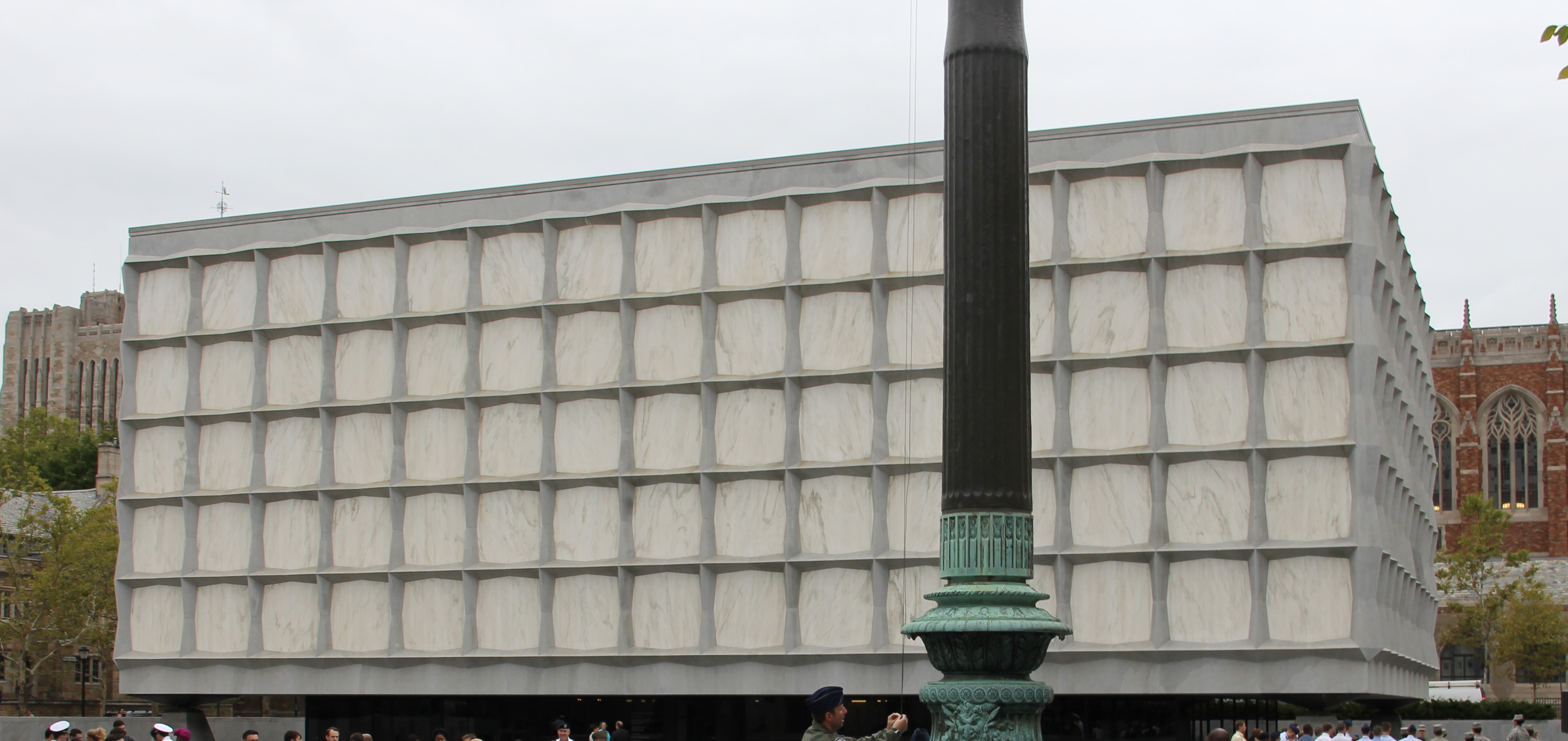
Five major campus building projects are all set to finish by the fall semester, but the projects differ widely in scope and purpose — from wholesale spatial transformations to small internal changes.
University Provost Benjamin Polak detailed each of the five building projects in his annual construction update email to the Yale community last week. The projects, which span the sciences, arts and humanities, include the Beinecke Rare Book and Manuscript Library, the Yale Center for British Art, the School of Music’s Hendrie Hall, the Sterling Chemistry Lab and the A. W. Wright Laboratory for physics research. Despite the different time frame and purpose of each renovation, Polak linked the five building projects by their common mission of enhancing research and education.
“The cranes dotting the Yale landscape are a visible reminder of how many [projects] are now in progress,” Polak wrote. “These sites … are as varied in architectural style and day-to-day use as they are united in a sense of purpose. Each is designed to underpin our education and research mission.”
Yale’s larger purpose in renovating these buildings is also to be a good steward of its property and to maintain the capital value of the University. Yale renovates campus buildings several times over the life of each structure, and Chief Financial Officer and Vice President for Finance Stephen Murphy ’87 said most buildings need major renovation approximately every 20 years.
Yale finances these building projects in a variety of ways, including gifts, debt and through the Capital Replacement Charge, a portion of the annual operating budget set aside for building maintenance. The CRC is the largest source of funding for Yale’s capital plan, Murphy said.
A closer look at three building projects set to finish this year — Beinecke Library, Hendrie Hall and YCBA — reveals dissimilarities in the purpose of renovating and the differing needs of several areas of campus. While some projects involve fundamental changes to the building’s framework, others simply seek to preserve historic architecture.
At Beinecke, which closed for renovations last May and which was last significantly renovated in 2001, the changes are mainly not cosmetic, meaning most library visitors will not notice obvious changes to the central display area, Beinecke Director Edwin Schroeder said. Instead, the library is repurposing existing space on the courtyard level of the library, he said. These changes, which include doubling the number of classroom spaces from two to four and creating three new rooms for group work, will allow the library to expand its programming. The increased number of classrooms will allow Beinecke to host even more than the 500 class sessions the library was already hosting, Schroeder said.
Beinecke’s renovations required that large amounts of library material be transported out of the central library space, and although Schroeder said his goal is to have most of the material back in Beinecke by the fall, he added that some of the collections may still have to be moved even after the re-opening on Sept. 1.
The renovations will also allow Beinecke to protect and preserve the collections for at least 50 years, Schroeder said. But renovating the library has been no small task, and Schroeder said he will be “so happy when it is over.”
Renovations at the School of Music’s Hendrie Hall on Elm Street will bring more substantial changes to the appearance and the function of the building. The renovations will transform Hendrie Hall into the Adams Center for Musical Arts and will add an entirely new portion to the rear of the building. But unlike at Beinecke, the School of Music started from square one in Hendrie Hall.
“The entire building was basically gutted back to the studs,” Associate Dean of the School of Music Michael Yaffe said. “It’s a completely redone building.”
Except for the central staircase and the building’s frame, all of the inside spaces were redesigned to have more practice rooms and lounge spaces for undergraduate, graduate and professional students’ music needs.
The renovations to Hendrie Hall have been a long time coming. The final architectural designs were finished in 2008, but the University later canceled all building projects due to the financial collapse. When Yale cut funding for the project, the School of Music was left to raise the remaining funds, which it eventually did. Construction work on the building did not officially begin until summer 2014.
The new Adams Center for Musical Arts is set to open when classes begin in the fall, Yaffe said.
A third major building project coming to a close this year has reimagined the gallery spaces within the Yale Center for British Art. The YCBA, which closed for renovation in January 2015, is set to open to the general public on May 11.
Instead of gutting the space, Yale has sought to preserve the public galleries, auditorium and lecture hall spaces, YCBA Director Amy Meyers GRD ’85 said. Not only will the renovations restore the YCBA’s 40-year-old mechanical systems, but they will also restore the center’s Long Gallery on the fourth floor to its intended use — to house 250 paintings from floor to ceiling, wall to wall. Sculptured busts on pedestals and other sculptures have also been installed, Meyers said.
Conservation is important in a building that Meyers said has global architectural significance. The center’s Chapel Street building was completed in 1974 and designed by acclaimed modern architect Louis Kahn.
“The center is not only one of the most beautiful buildings created by Yale to enhance our campus, but also one of the most important buildings of the 20th century from a global perspective,” Meyers said. “Protecting this critical piece of cultural heritage in the most responsible manner possible is a privilege and a pleasure.”
Wright Laboratory’s renovations are creating specialized spaces for physicists to conduct neutrino and dark matter research, and the three-yearlong $130 million renovations to Sterling Chemistry Lab have rebuilt the exterior while creating new teaching laboratories for chemistry and biology inside.







